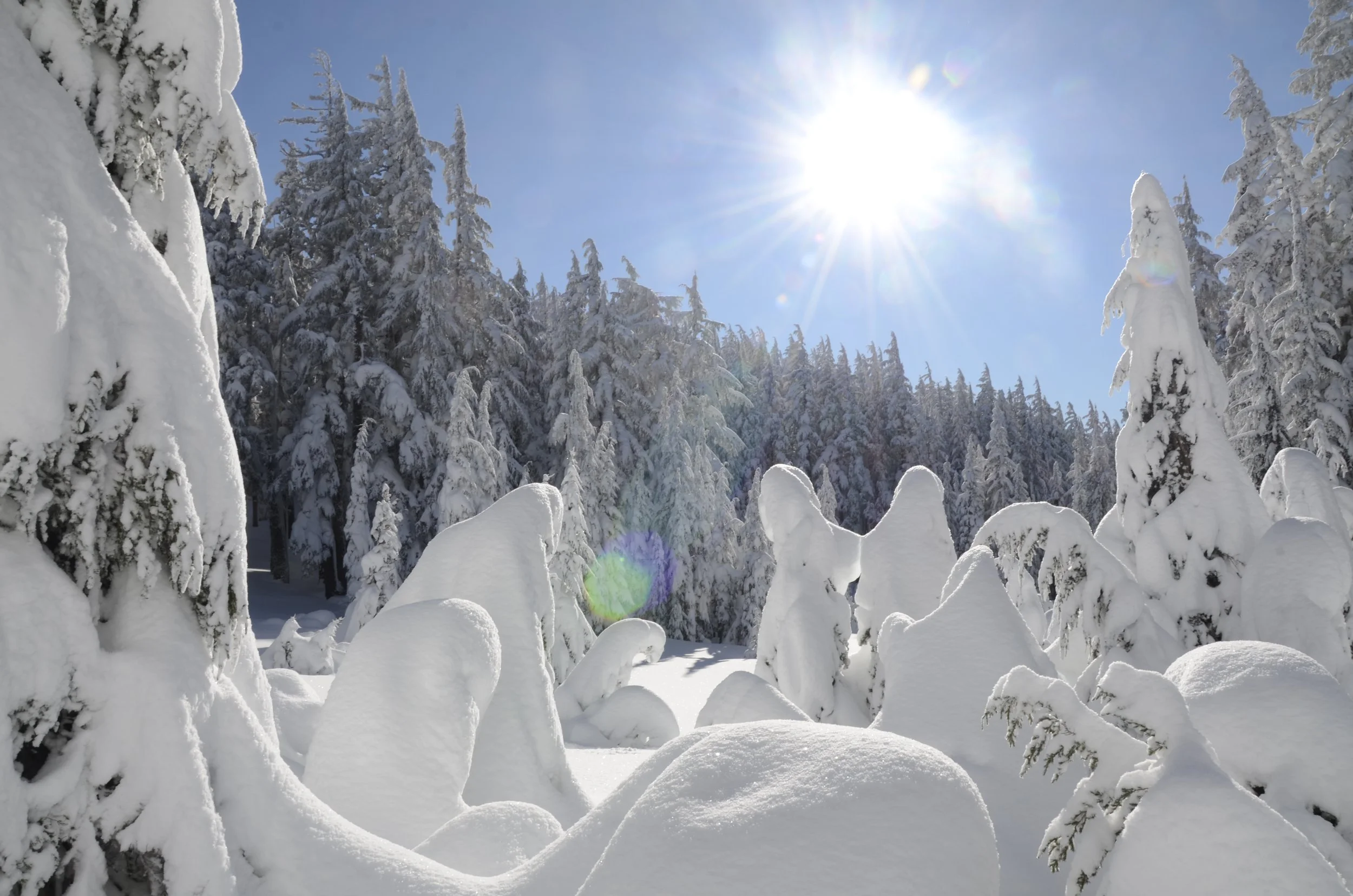CASCADES:SNOW field work begins
As the first major snow storm rolls through the Central Oregon Cascades, Tiemo and I pack up the snow sampling kit and spectrometer to get a first data set for the CASCADES:SNOW project. Even when the science doesn’t work out first try, you still learn a lot.
We set out from Dutchman Flat Snopark near Bend, Oregon at cold-o’clock to ski up towards Broken Top, measure reflectance spectra, try the new laser sensing method and get a data set fit for publication. Easy. Except that champagne powder on a blue bird day doesn’t make any of this easy.
Breaking trail was slow in 60cm of fresh powder. It was the first day on skis for both of us and neither had ski legs yet. The A-plan was to reach Broken Top, where we had measured the Crook Glacier in September. We wanted to use that data set for reference. But we traveled slowly, and called it good when we reached a big meadow 2 miles short of the foot of the mountain. It was flat, wide open, with plenty of undisturbed snow, it was a good spot.
We set up the spectrometer first. The diffuse optical measurement I developed measures the ice’s absorption coefficient. From that, one can calculate the albedo at the laser wavelength, something we can compare to a direct measurement with a spectrometer. That’s where the problems started. It was bright today, very bright. And the snow was clean as a whistle and super light, which means it reflects almost all incident light. That means that anything in the field of view of the spectrometer that might cause a small error - the shadow of the tripod, the two of us and our equipment - throws off the measurement. I had tried this the day before when it was overcast, and it worked fine, but the direct sun light was hard to measure for a reference spectrum. When I looked at the data later, it wasn’t usable. I will try again another time.
The diffuse-optical measurement seemed to work better, except for the fact that the batteries didn’t want to power the lasers in the cold (it was well below freezing - we plugged everything into my laptop instead). And then of course it was hard to even put down a tripod in the fluffy powder.
Turns out that the absorption and scattering coefficients of snow depend of its density: Old firn can be very dense (~500-700g/L), and it worked fine when I tried it out on an old snow field on Crook Glacier 3 months prior. Today, we measured a density of 130g/L, which is about as light as it gets around here. As I learned today, in those conditions that backscattered light exits the snowpack over a very large area - leaving little to detect. The intense, bright background light of the mid-day sun on a blue bird day at high elevation didn’t help either. Back home, I did my best to get the data retrieval to work on the data we got, but the uncertainty of the measured absorption coefficients was huge. On a good day, the measurement is about 25% accurate, enough to average it out over a few measurements to get decent precision. Today, I was seeing variations over 3 orders of magnitude, some so low they would be a world record, which means they are probably wrong. A range from “unphysically clean / cleaner than clean” to “clean as a whistle”, if one would try to calculate particulate concentrations from this.
What I learned is that the sun is an inconvenient light source, reflectance spectroscopy isn’t as easy as I thought, and light, fresh powder is better for skiing than it is for science.
I will wait a few days until the snow settles and increases in density, which will also increase the particulate concentration. That will increase absorption and lower the albedo, making both easier to measure and should give me a more pronounced signature of particulates in the snow. It is warming right now and the sun is out, so hopefully I can try again soon. Fingers crossed.


